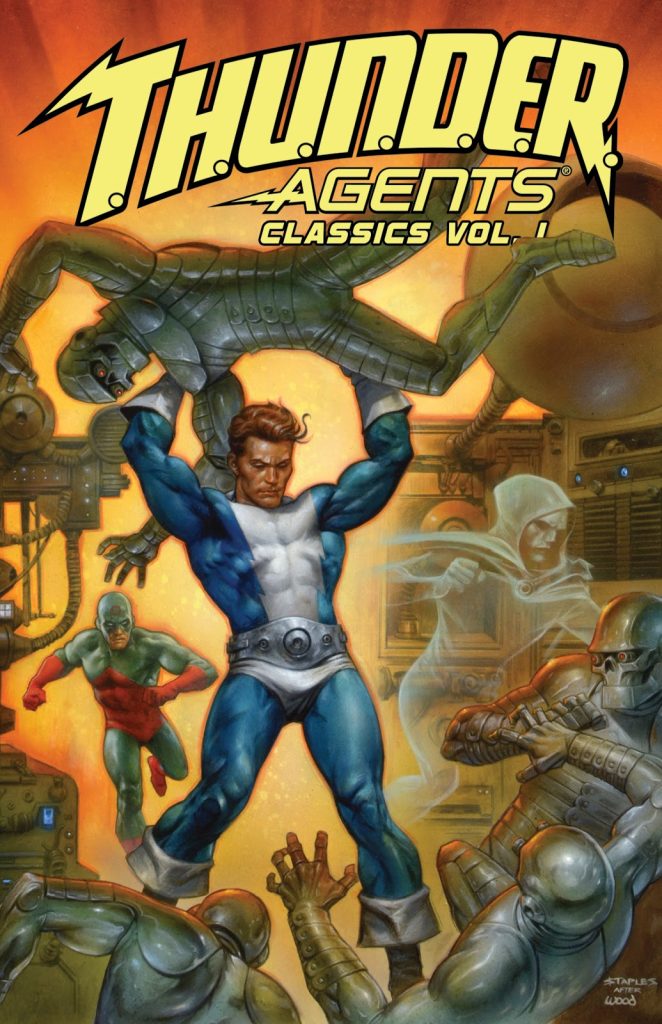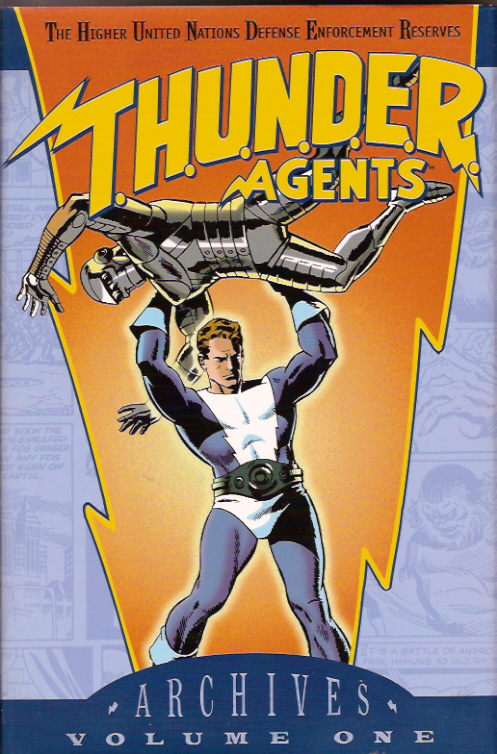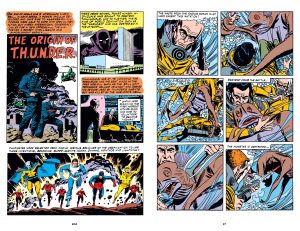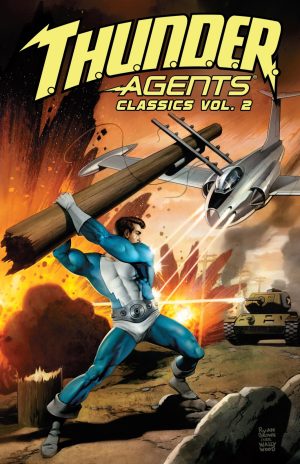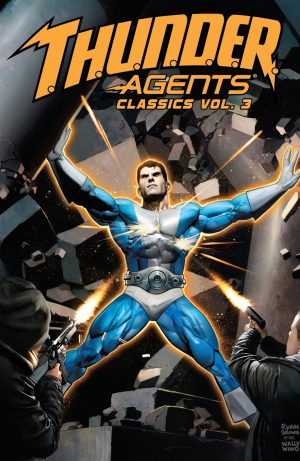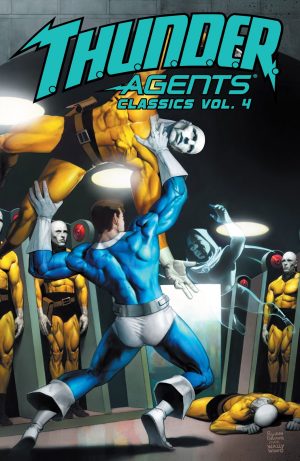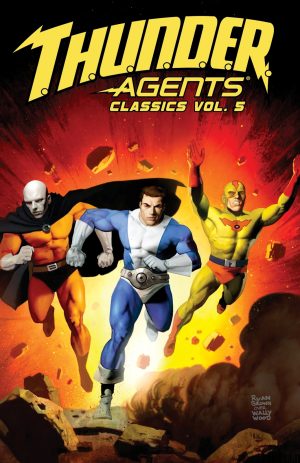Review by Ian Keogh
T.H.U.N.D.E.R. Agents is a series with a formidable reputation among comics fans of a certain age, perhaps those who were around to pick up the bold experiment of a double-sized 25 cent comic in 1965 with heavy doses of art from all-time great Wally Wood.
It was launched by fiction house Tower Books, whose publisher approached Wood to create a line of superhero comics, and supplied the budget and freedom for Wood to hire whom he liked to work on them. Wood knew superheroes were back with a vengeance in 1965, and a year earlier TV spy series The Man From U.N.C.L.E. had become an instant hit. In combination with writer Len Brown, Wood combined the two ideas to come up with something relatively original.
In the days when such things were exciting rather than contrived, T.H.U.N.D.E.R. stood for The Higher United Nations Defense Enforcement Reserves, a crack squad of action agents equipped to fight global threats, and supplemented by superheroes. The opening story explains how three agents came to acquire a belt that made the wearer steel-hard, an invisibility cloak and a helmet that amplifies brain power. Len Brown, amusingly named after his writer, became Dynamo, Menthor uses the helmet, and the invisibility cloak fell into the hands of Noman, the most intriguing of the agents, able to transfer their consciousness between a number of alternate android bodies. They only function when Anthony Dunn’s consciousness activates them. Speedster Lightning is a later addition. In these stories, the primary enemies are the unseen Warlord, and his second in command Iron Maiden, who under Wood fills out an armoured suit very curvaceously.
A consistently fun aspect is Dynamo and Iron Maiden’s mutual attraction. In creating the cast Wood gave them fallibilities readers could relate to, such Lightning shortening his lifespan every time he uses his super speed suit. Dynamo’s belt can only be used for limited spells and the opening pages of the first Menthor story reveal him as a double agent. Some human agents are constructed from the start to be more than interchangeable support, and have their own squad strip. Also embedded from the beginning was that the superheroes went on solo missions, and them all being seen in the same story is a relative rarity.
The sample art features Wood, the star turn, producing page after page of superlative action, and the surprise package of Mike Sekowsky outperforming bigger names. However, their approach is dated and while the craft should be obvious, superhero comics look very different now. Sadly Gil Kane only draws a few pages, while by his own high standards Reed Crandall’s contributions are disappointing. The remaining artists are people who could hit a deadline and tell a story, and it looks as if Wood laid out the pages for some of them.
It’s known Wood wrote many of the stories, but which is uncertain as none are credited. Brown’s primary career was editing card series for Topps gum, and although he only writes three stories, he’s the strongest writer with greater depth and more surprises to his Dynamo stories, but future Mad mainstay Lou Silverstone also has his moments. Plots by others have viable threats, but are generally more straightforward, and lack surprises. However, the sheer amount of great art from Wood, for many his 1960s peak, drags this higher up the quality scale despite these being period pieces with all that entails.
This package was earlier available as the hardcover T.H.U.N.D.E.R. Agents Archives, as was Vol. 2.
